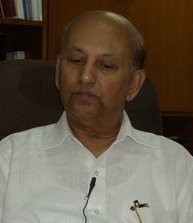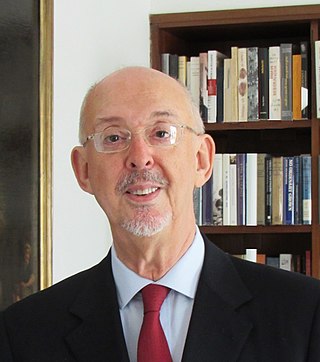
The International Astronautical Federation (IAF) is an international space advocacy organization based in Paris, and founded in 1951 as a non-governmental organization to establish a dialogue between scientists around the world and to lay the information for international space cooperation. It has over 390 members from 68 countries across the world. They are drawn from space agencies, companies, universities, professional associations, museums, government organizations and learned societies. The IAF organizes the annual International Astronautical Congress (IAC). As of 2019, Pascale Ehrenfreund has served as the president of the IAF.

CNES is the French national space agency. Headquartered in central Paris, the agency comes under the supervision of the ministries of the Armed Forces, Economy and Finance and Higher Education, Research and Innovation.

The American Institute of Aeronautics and Astronautics (AIAA) is a professional society for the field of aerospace engineering. The AIAA is the U.S. representative on the International Astronautical Federation and the International Council of the Aeronautical Sciences. In 2015, it had more than 30,000 members among aerospace professionals worldwide.
The Hermann Oberth Gesellschaft (1952-1993) was an association named after Hermann Oberth, the German astronautics pioneer and the authoritative expert on rocketry outside the United States, which develops and builds rockets and trains engineers in space technology.

Udupi Ramachandra Rao was an Indian space scientist and former chairman of the Indian Space Research Organisation. He was also the Chairman of the Governing Council of the Physical Research Laboratory at Ahmedabad and Nehru Planetarium at Bengaluru and chancellor of the Indian Institute for Space Science and Technology (IIST) at Thiruvananthapuram. He is known as "The Satellite Man of India". He pioneered India's first satellite launch Aryabhata in 1975.

The Dauphin is a French sounding rocket, flown six times between 1967 and 1979. It consists of a modification of the first stage of the Dragon with a larger payload nosecone.

The British Interplanetary Society (BIS), founded in Liverpool in 1933 by Philip E. Cleator, is the oldest existing space advocacy organisation in the world. Its aim is exclusively to support and promote astronautics and space exploration.
The International Academy of Astronautics (IAA) is a Paris-based non-government association for the field of astronautics. It was founded in Stockholm, Sweden) on August 16, 1960, by Dr. Theodore von Kármán. It was recognised by the United Nations in 1996.
Jerome Pearson was an American engineer and space scientist best known for his work on space elevators, including a lunar space elevator. He was president of STAR, Inc., and has developed aircraft and spacecraft technology for the United States Air Force, DARPA, and NASA. He held several patents and was the author of nearly 100 publications in aircraft, spacecraft, electrodynamic tethers, SETI, and global climate control.
Ernst Leo Albin Fasan was an Austrian lawyer and a recognized authority in space law, including metalaw.

Teófilo Tabanera (1909–1981) was an Argentine engineer and air force officer and an instrumental figure in space exploration.
M.Y.S. Prasad is an Indian scientist and the former director of the Satish Dhawan Space Centre Sriharikota Range (SDSC-SHAR). Govt. of India’s Civilian Award Padma Shri for the year 2014 for his distinguished service in Science and Technology.
Hungarian Astronautical Society abbreviated as MANT, is a non-profit organization focusing on educational and informative activities on space science, founded in 1986.
The association considers itself a successor of the Astronautical Committee of the association called Scientific Lyceum, founded in 1956; and the Central Astronautical Section of the Federation of Technological and Sciences Associations.
Members of the society are space researchers, other professionals concerned in space-related fields and others interested in the interdisciplinary and state-of-the-art uses of outer space.
John C. Mankins is a former NASA physicist known for his work on space-based solar power.

Sergio Marchisio is a full professor at Sapienza University of Rome. He also serves as an expert legal consultant for the Italian Ministry of Foreign Affairs and as a delegate to various international organizations and conferences.

Leslie Robert Shepherd was a Welsh nuclear physicist. He was involved in the design and operation of the experimental Dragon reactor, which used helium as a coolant. He was also an advocate of space exploration, serving as the president of the British Interplanetary Society and the International Astronautical Federation.

George A Danos is a Cypriot space scientist, space diplomat, engineer, astronomer, entrepreneur and science communicator. He is a graduate and eminent alumnus of Imperial College London. He is the President of the Cyprus Space Exploration Organisation (CSEO) and the President of the Parallel Parliament for Entrepreneurship of the Republic of Cyprus.
Gerhard Haerendel is a German space scientist.

Paolo Ferri is an Italian physicist who spent his entire career at the European Space Agency (ESA), in the field of space mission operations.
The World Space Award is presented by International Astronautical Federation to an eminent individual or team at the IAC Congress, after a nomination process, that has made an exceptional impact to the progress of the world space activities by their outstanding contributions in the fields of space science, technology, medicine, law, or management over the period of time. it is often described as the "world's highest aerospace award", first awarded in 2013.













